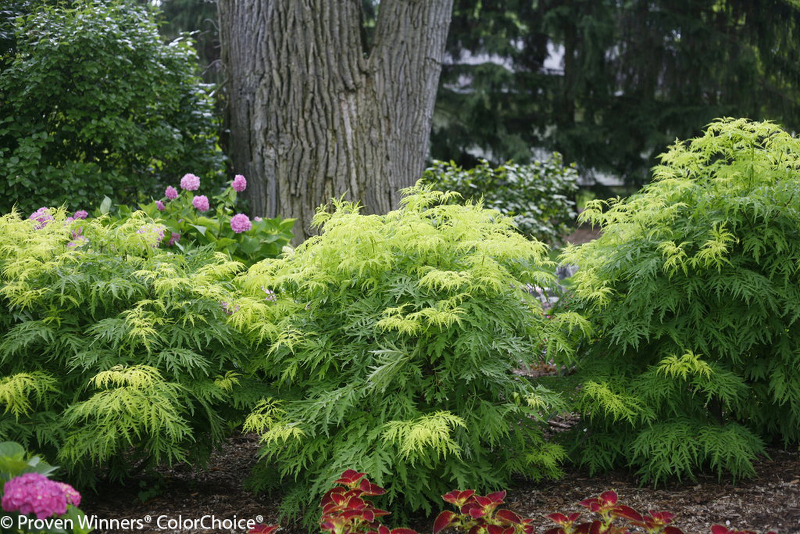Elderberry plants thrive with 1”-2” of rain per week. Supplemental watering is beneficial in providing the necessary amount of moisture needed, especially during the flowering and fruiting season. The roots of the elderberry are shallow and they do not like to be submerged underwater for extended periods of time. So keep this in mind when locating the ideal planting spot for your elderberry and allow necessary drainage amendments to assist in your watering efforts.

How To Tell If Elderberry Needs Watered
Due to the nature of the shallow roots of the elderberry, one main sign that your plant is in need of a thirst quench is by feeling the soil surrounding the root base once every week. If it is moist and not submerged in water, your elderberry has sufficient moisture to keep growing and thriving. If dry, water until the entire root base is wet to the touch without observing standing water present for long periods of time. Using the soil test as your tool to determine whether your elderberry needs watering will prevent leaf wilt and damage from lack of adequate water.
How Often To Water Elderberry
When first planting your new elderberry, keep the soil consistently moist for the first month for the best chance of solid root establishment.
Once your elderberry is established, watering needs should be determined once per week to ensure there is enough moisture for adequate growth, blooming and fruiting. During the winter months, watering can be cut down by checking once every two to three weeks. This is due to the plant not drawing nearly as much water through the roots since there is no growth happening.
Can you overwater elderberry plants? Yes, if you have your elderberry planted in a lower elevation area or in poorly drained soil, overwatering can very easily happen. More frequent and shorter bursts of watering may be necessary if supplemental water must be added. The roots are shallow and are susceptible to root rot if left submerged for long periods of time.
Potted elderberry plants tend to have less soil surrounding the roots and may be in a location that isn’t easily accessible to rainfall. If this is the case, simply check the soil in your potted elderberry once or twice a week to ensure it is moist. Use your discretion of how much water is needed by observing how the soil absorbs the water.
Remember, preventative measures will make watering easier and more efficient. These preventative measures include ensuring your pot size is sufficient for your plant, using well draining soil, using a pot with adequate drainage holes and even adding small stones to the bottom of the pot.
Best Time To Water Elderberry
Determining the best time to water your elderberry depends on how adequate your drainage is within the soil at the base of your plant. If your soil drains well, watering can be done at any time of the day. Ensure to water the root base without splashing too much water on the leaves if watering in full sunlight. If your soil is not draining well, water in the late morning to allow plenty of time for the water to absorb. This will further protect your roots if the ground temperature is close to freezing. These instructions apply to both in-ground and potted elderberry plants.
How to Water Elderberry
Step 1 - Determine the need of water.
Touch the soil and feel for moisture. If the top 2 inches is dry, then the plant probably needs water.
Step 2 - If dry, water without submerging the roots for long periods of time.
Watch your soil absorb the water to ensure you do not overwater.
Step 3 - Water the root base.
Take care to water the root base, avoiding watering the leaves (this causes sunburn on the leaves when in full sun).
Step 4 - Monitor your elderberry on a weekly basis.
Weekly (twice-weekly for potted elderberry) check-ins will ensure your elderberry always has the necessary amount of water to thrive.
Elderberry Watering Tips
- Check the soil on a weekly basis (twice weekly for potted plants).
- Supplement water when rainfall has not been sufficient.
- Take care not to submerge the roots for extended periods of time.
 |
Author Chris Link - Published 01-15-2022 |
